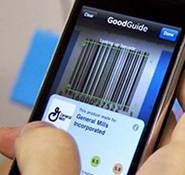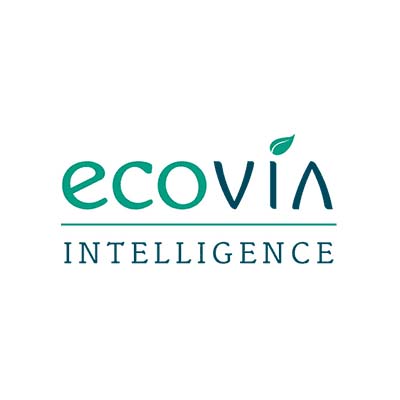
Advances in mobile technology are increasing the number of consumer products with smart barcodes. Although this development is encouraging more sustainable products, the implications are far reaching that could eventually lead to the demise of some eco-labels.
Eco-labels currently play an important role in marking sustainable products. Indeed, green symbols and logos are becoming ubiquitous on foods, cosmetics, household cleaning products, textiles, furniture and even toys.
However, some consumers are becoming disillusioned with eco-labels because of the shortcomings of many standards and lack of transparency. For instance, the proliferation in food eco-labels is causing consumer confusion whereby many cannot distinguish between organic, fair trade, UTZ certified, and other eco-labels. Thus, consumers are increasingly turning to mobile technology applications to meet their informational needs.
Mobile devices enable consumers to get a wealth of information on products from their QR (smart) barcodes. Consumers seeking sustainable products can get details on the product’s environmental, social and even economic footprint whilst shopping. Some brands allow consumers to use the barcodes to ‘track and tell’ the product origins. Indeed, the technology is becoming popular on fruits & vegetable products as they allow consumers to meet the growers. For instance, the Californian brand Locale has strawberries that are traceable to the farm of origin.
Organic Monitor sees US-based GoodGuide as a frontrunner in mobile technology applications. By downloading the smart application on their mobile phones, consumers can get details on various health, environment and society parameters of their products. The GoodGuide gives ratings for almost 100,000 consumer products and companies. According to its methodology, Horizon Organic milk has lower environmental rating record then Nesquick strawberry milk, and Nature’s Gate natural baby shampoo is more toxic than a Johnson & Johnson’s conventional shampoo. By rating products on various criteria, it highlights the shortcomings of many sustainable products.
As consumers become information savvy, they are demanding more from sustainable products. Organic – the world’s largest eco-label for consumer products – has grown to represent a USD 60 billion industry spanning foods, textiles, cosmetics, flowers and related products. Although organic is the most sustainable form of agriculture, existing standards do not factor in CO2, H20 and energy footprints. Thus, an organic apple from Latin America can have a higher environmental impact than a locally grown conventional one. Similarly, a fair trade coffee can give a positive social contribution to the African grower but still have an adverse effect on the environment.
The major advantage of mobile technology is that it can give a holistic picture of a product’s sustainability credentials. Whereas the shortcoming of most eco-labels is that they look at some ethical / ecological aspects in isolation. By ‘naming and shaming’ brands, product rating systems like those of the GoodGuide also encourage companies to develop more sustainable products. Thus, companies with organic products are now looking at social aspects, whilst those with fair trade products take environmental considerations more seriously. The technology is also making other sustainability indicators like carbon emissions and packaging footprint prominent.
Consumers are likely to benefit from greater transparency and accountability from brand owners; however a question mark hangs over the future of existing eco-labels. With over 500 symbols and logos representing sustainable food products, many consumers are getting lost in the maze of eco-labels. To these consumers, mobile technology gives an exit route whilst maintaining their green purchasing beliefs.
Sustainability Summits
The impact of mobile technology on sustainable products is regularly featured in the Sustainable Foods Summit and Sustainable Cosmetics Summit. These executive summit are now hosted in Europe, North & Latin America, and the Asia-Pacific.
Posted: January 5th 2012
For permission to publish our research insights, please contact our media department

